By Tommy Clarkson from the July 2015 Edition
Family: Leguminosae, Fabaceae, Papilionaceae or Cleomaceae (It sorta’ depends upon which botanist you ask!)
(Also known as: Naked Coral Tree, Sunshine Tree or Variegated Coral Tree)
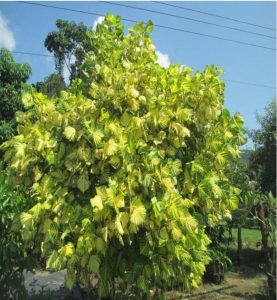 The Erythrina genus consists of around 100 various trees and shrubs. The preponderance of these sport spiny trunks and branches with a number of them producing strikingly beautiful flowers. But, of them all, this one is probably my most favorite! With the pure and simple, year around, elegance of no more than its leaves, it is to trees what Caladium are to smallish plants and Crotons are to bushes. And when it flowers. . . . wow!
The Erythrina genus consists of around 100 various trees and shrubs. The preponderance of these sport spiny trunks and branches with a number of them producing strikingly beautiful flowers. But, of them all, this one is probably my most favorite! With the pure and simple, year around, elegance of no more than its leaves, it is to trees what Caladium are to smallish plants and Crotons are to bushes. And when it flowers. . . . wow!
With wonderful variegated, broad, and somewhat heart-shaped yellow and green leaves (that may tend to revert to green with age) the E. caralloides and its kin originate in a variety of locales. These stretch from Madagascar, Tanzania and India throughout Southeast Asia and Indo-Malaysia to Australia and then northward to the Philippines and Taiwan as well as Northeastern and Central Mexico where I first found them. They can now be found in numerous other locations.
The Coral Tree is a deciduous, perennial tree, which means that it loses its leaves each year and, later, grows new ones. This picturesque tree is fast growing, broad and spreading in nature and can attain a height of 20 feet (over six meters) with “a broad, spreading and open crown with usually contorted braches”.
These stout branches are armed with curved “black tiger’s claw spines” which also grow on the long leaf stalks. The compound leaves have three diamond shaped leaflets, each approximately six inches (15.2 cm) long. But before these leaves arrive in late winter or early spring, the Erythrina variegata orientalis puts on quite the show with bright crimson flowers of 6 -12 inches (15 ¼ to 30 ½ cm) that are displayed in dense terminal clusters.
Following this comes the fruit. “But wait, there’s more!” This beauty may provide yet more enjoyment for us by flowering a bit during the summer as well.
After those flowers come cylindrical – about 15 in (38.1 cm) long beanlike pods seeming rather constricted between the reddish brown seeds.
The Coral Tree prefers well-drained soil but is not all that picky about the dirt in which it calls home as it is a nitrogen fixing tree and can tolerate a home that’s acidic, alkaline, sandy, clay or loam. Preferring full sun, it is more prone to bloom best after a period of drought and, salt tolerant, is a good subject for coastal planting but be aware, it can form surface roots.
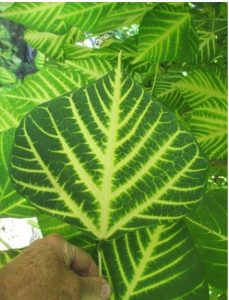 It was introduced to the United States by botanist Monroe Birdsey and is a superlative standalone specimen that I have effectively utilized on landscaping projects.
It was introduced to the United States by botanist Monroe Birdsey and is a superlative standalone specimen that I have effectively utilized on landscaping projects.
The Coral Tree can grow as much as five feet per year (1.5 meters). It can be propagated through woody stem cuttings, soft/semi-hard/hard wood cuttings and from seeds generally “germinate(d) in vitro in gelatin, agar or other medium.” If the latter form is your preferred method, before attempting to germinate them, allow the pods to dry naturally on the tree, then break them open to collect the seeds and remove their fleshy coating before storing.
Beyond attractiveness and being easy-to-grow, around the world the Coral Tree is regarded as beneficial and useful. In southern Florida they’re employed as hedges. On the other side of the world, in India, they are used as support props for vine crops such as black pepper, vanilla, yam and betel with the added benefit that during the hottest months
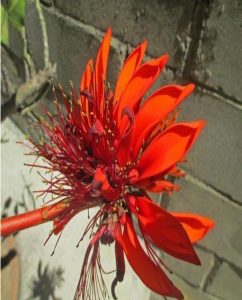
their leaves shade the vines and keep them moist. In turn, when the climes get cooler, their leaves fall and the vines receive more direct sunlight, which is exactly what they need at that time.
Besides their pure and simple attractiveness, they are popular as shade trees throughout their growing area. They make excellent living fence posts and – with 16-18% crude protein – their leaves are good feed for many species of livestock.
And in one of my sources I read where “In Asia, juice from the tree’s leaves is mixed with honey to kill tapeworms, roundworms and threadworms. Women take the juice to stimulate lactation and menstruation. A warm poultice of its leaves relieves rheumatic joints. The bark is used as a laxative, diuretic and expectorant.”
Last, a note for the vegans among us: Its seeds as well as other parts are poisonous if ingested. So you may want to re-think that Coral Tree salad!
For back issues of “Roots”, gardening tips, tropical plant book reviews and videos of numerous, highly unique eco/ adventure/ nature tours, as well as memorable “Ultimate Experiences” such a Tropical Garden Brunches.
Visit us at.. www.olabrisagardens.com
Download the full edition or view it online
—
Tommy Clarkson is a bit of a renaissance man. He’s lived and worked in locales as disparate as the 1.2 square mile island of Kwajalein to war-torn Iraq, from aboard he and Patty’s boat berthed out of Sea Bright, NJ to Thailand, Germany, Hawaii and Viet Nam; He’s taught classes and courses on creative writing and mass communications from the elementary grades to graduate level; He’s spoken to a wide array of meetings, conferences and assemblages on topics as varied as Buddhism, strategic marketing and tropical plants; In the latter category he and Patty’s recently book, “The Civilized Jungle” – written for the lay gardener – has been heralded as “the best tropical plant book in the last ten years”; And, according to Trip Advisor, their spectacular tropical creation – Ola Brisa Gardens – is the “Number One Tour destination in Manzanillo”.
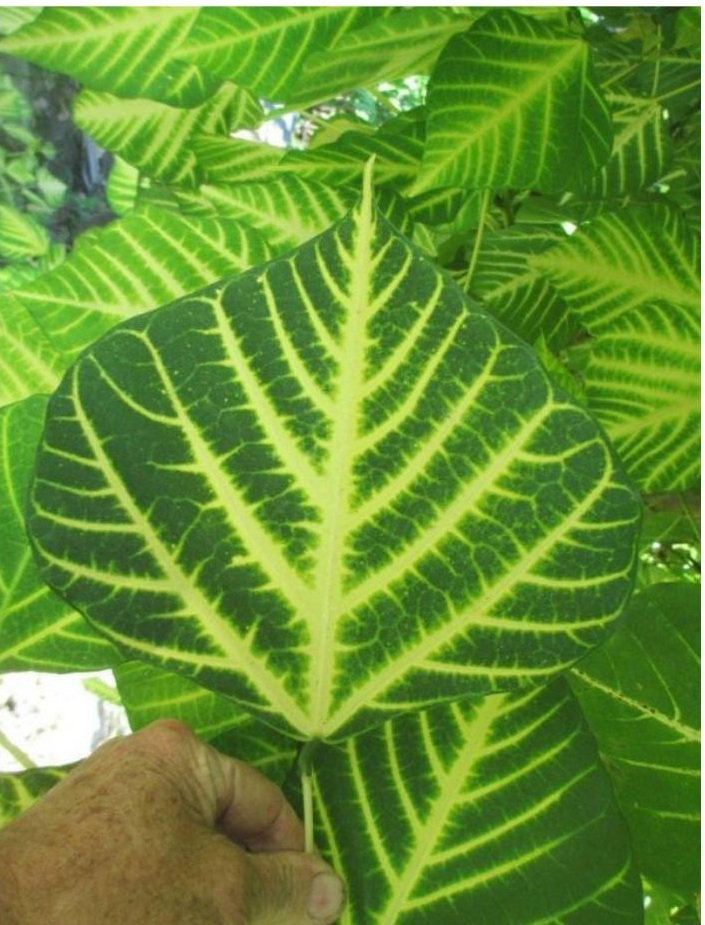

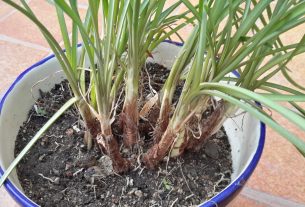


You must be logged in to post a comment.